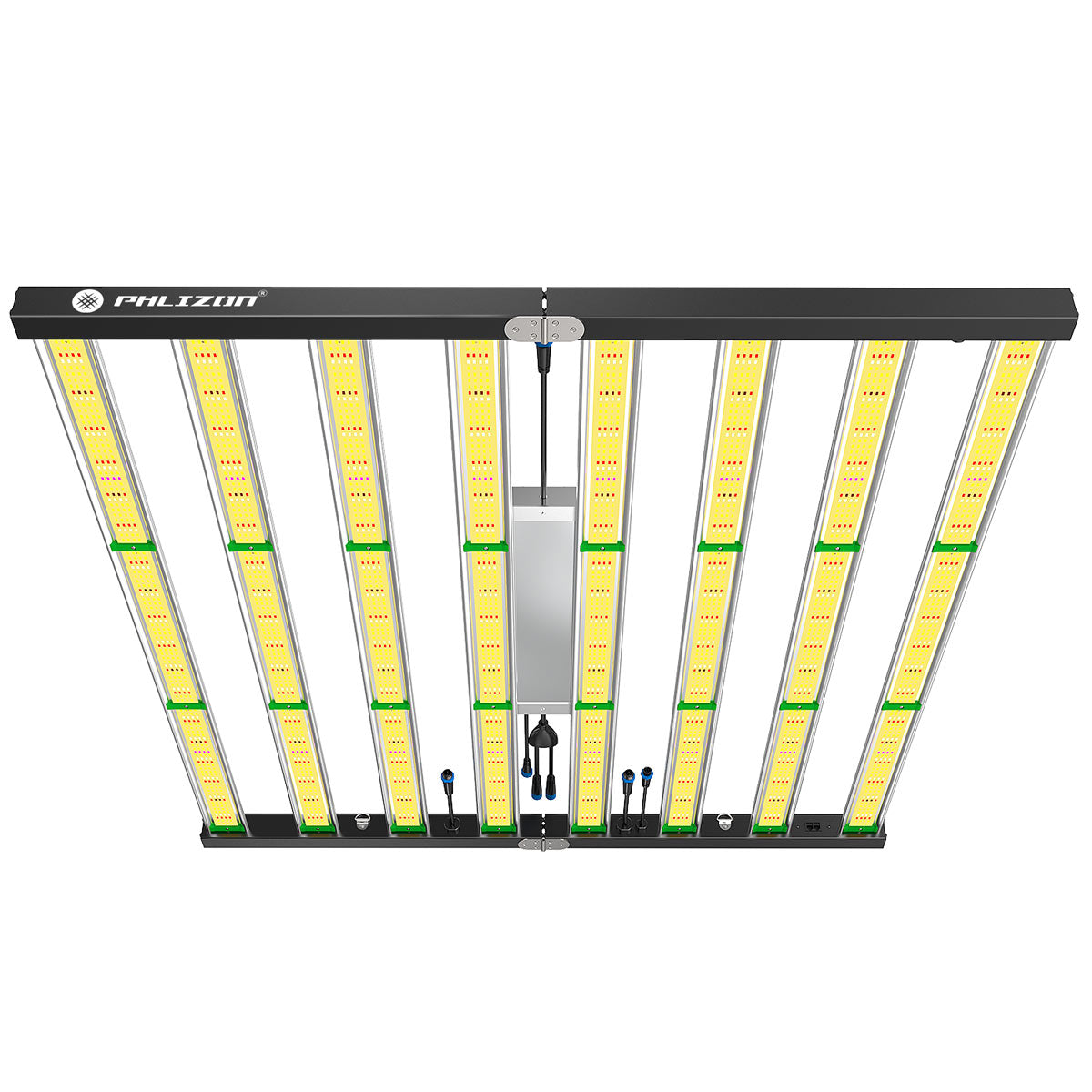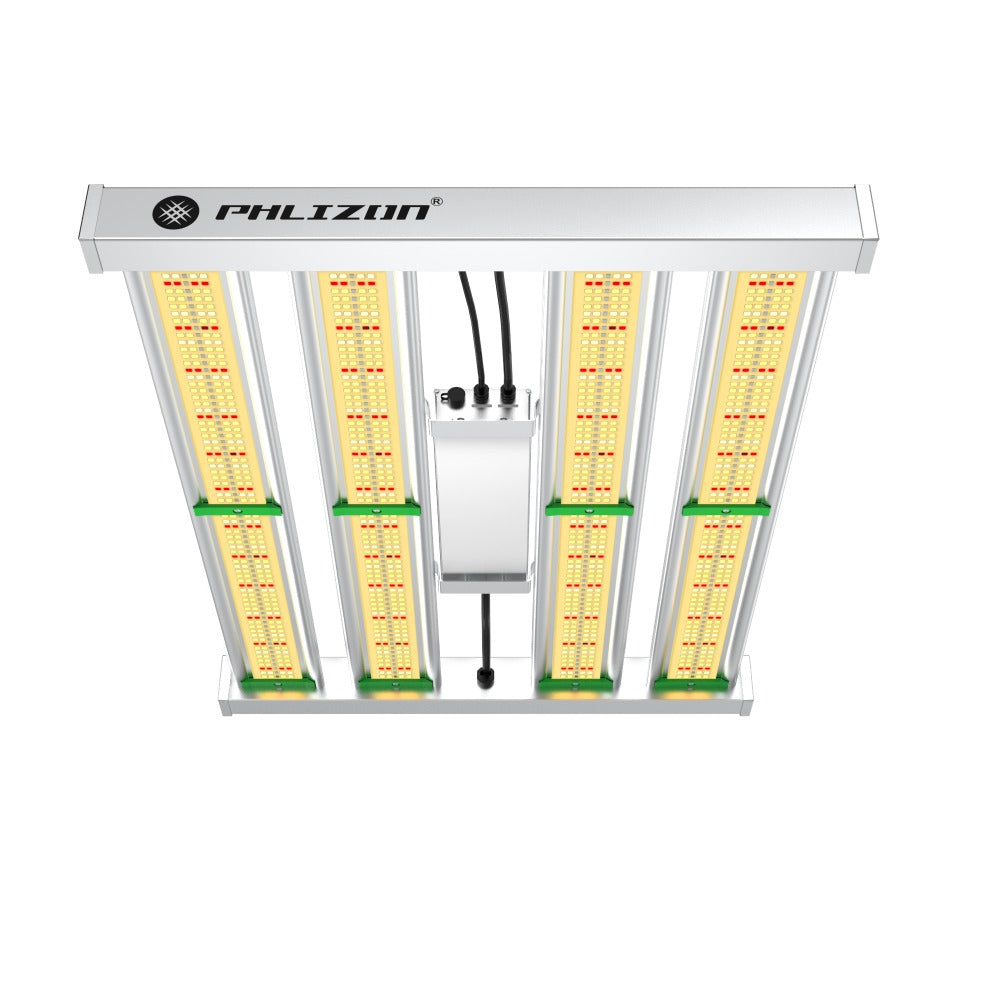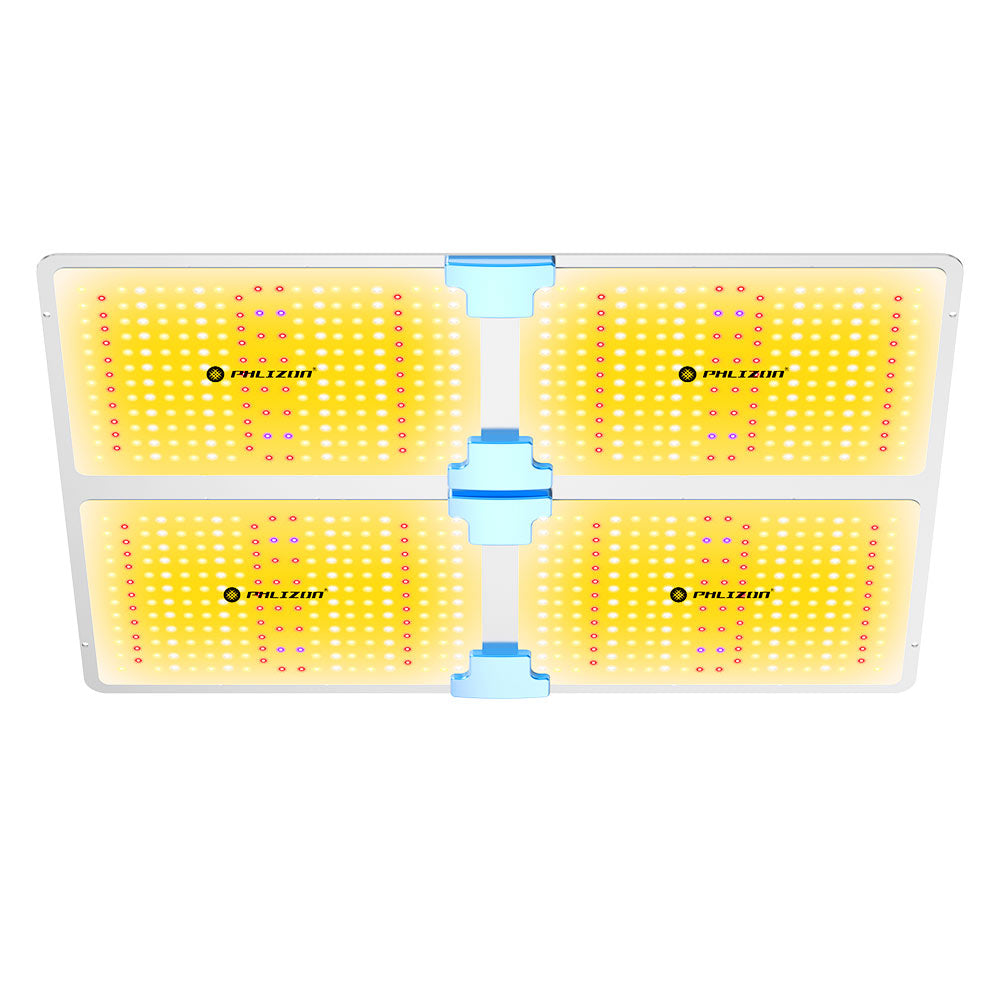Menu
How Long to Leave UV Light on Plants?
Introduction
Ultraviolet (UV) light is an invisible wavelength of light between 10 to 400 nanometers of light spectrum.
With the use of UVs, you'll have richer flavours, better colours and scents and also have higher quality yields on your plants than those without access to UV light.
UV lights are useful to plants when they are used in the correct amount and this article will guide you on using the correct amount of UV for the correct amount of time.
Understanding UV Light and Its Importance for Plants
Let's dive a little deeper into understanding what UVs really are. UV is an electromagnetic radiation with the wavelength mentioned above. It is shorter than visible lights but longer than X-rays.
Plants need UV grow lights in their complete necessities for growth, from development stage to their flowering stage. UV light also improves the germination of seed and not just limited to the growth development. This implies that the use of UV lights generally fosters the health of your plant.
UV light for plants is majorly divided into three components: the ultraviolet A (UVA), ultraviolet B (UVB) and ultraviolet C (UVC), where UVA and UVB are the two UVs that are utilised in grow light, including several LED grow lights.
UVA, between 320 to 400 nanometers, is naturally present on earth of which we receive 98.7% of it in light. UVA enhances the taste and appearance ( both beauty and strength) of your plant.
The UVB, 270 - 300 nanometers, are best known for altering the DNA of any fungi that hurt the plants, thereby making it harmless. As against the 98.7% in UVA, only 1.3% of this UV reaches earth.
The third type, UVC, with 100 - 280 nm wavelength, is a short wavelength that is often absolved in the atmosphere. Its main importance is to help increase the plant’s branch size which in turn increases production.
General Guidelines UV Light Exposure Duration
Having mentioned the components and importance of UV in plant growth, it is crucial to know how long you can leave UV lights on, so they won’t harm the plants.
It is often assumed that UV grow light is only required in the flowering stage but in actual sense, the requirements for use of UV light and the duration it takes is based on several variables.
The amount of time you leave your plant under the UV light is dependent on variables such as the plant's species, growth stage and even the light's intensity.
Although there is no direct instruction on the type of variable that requires a certain time of exposure, it is best that you apply the UV for at least one hour per day during the seedling and vegetative period. You can then change the timing to two hours when it's matured. You can also change the timing with 15 minutes daily, to see what time fits the plants best.The best growth stage to start applying UV light is from the early stage, as mentioned above. Remember to always check the condition of the plant if it is not burning, especially if you're just using the uv on your plants.
Risks and Management of Excessive UV Light
Despite the fact that UV lights have a lot of benefits to the plant, excessive exposure can be detrimental. The UV light can affect the plants and the microorganisms that interact with them.
Potential risks of overexposure to UV light for plants.
The three different components of UV light, UVA, UVB and UVC have direct effects on the plants.UVA, having the longest wavelength can disrupt photosynthesis, and thus affects plants ability to convert light to energy. It can also generate harmful radicals that hinder growth.
The UVB light has been shown to damage the DNA, membranes, lipids and protein of the microorganisms associated with the plant, which in turn affect s the growth of the plant.
Ultraviolet C, being the most energetic radiation, can often cause plant damage when exposed for too long. It can damage the plant’s cells so much that it can lead to stunted growth and even death. It also affects the plant’s DNA, leading to reduced yield.
How to Identify and Mitigate UV Light-related Plant Damage
Your plant itself will always give you signs to show that they’ve been damaged by the UV light exposed on them. You just have to observe them closely and you will see certain common signs such as wilting, discoloration, stunted growth, slow leaf expansion.
From the risks mentioned above, you can also note specific damages attributed to certain components and thus apply necessary measures. It is also very important that you have other factors needed for growth rightly fixed, such as the soil, so you won’t mistake the effect of other factors on the UV light used.
Practical Tips for Using UV Lights with Plants
UVs can be utilised to improve the growth and health of plants in different settings such as indoors/outdoor gardens and as greenhouse lights.
For the seedling stage, you can position your UV light at 6 to 12 inches high and keep it on for 30 minutes to 1 hour per day to prevent light burn seedlings. When the plants get to the vegetative stage, you can position the light 12 to 18 inches above the plants. You can keep it on for 1-2 hours, depending on stage and plant. And when the plant attains the flowering stage, which is a crucial stage, you will need to take the light upward and leave the light on for 2-3 hours.
In addition to the above suggestions, moderation is key. There is no fixed way to use UV lights with plants as their needs and level of tolerance varies with species, light intensity, and other environmental factors. You can always use the above tip as a start, and gradually increase or decrease it to get the desired result.
You can choose an appropriate UV light source on Philzon, a type that is designed as grow light. Ensure you position your light in an angle where the plant will receive optimal rays of light. You can also read the light source manual for optimal use.
Conclusion
Ultraviolet lights are useful for plants when they are used optimally. Naturally, UVA, UVB can pass through the Ozone to reach the earth but UVC can’t. In artificial use, they can all be used and earnessed to enhance the growth and improve the yield.
How far should grow lights be from plants is also a question that has no direct response due to the variation of several plants and their conditions but you can always start from 6 inches for seedling stage and change the height as the plant grows and matures.
When UV lights are used wrongly, it leads to adverse effects on plants. It doesn’t just kill harmful microorganisms but also begins to destroy the plant’s cell leading to sunburn, wilting, stunted growth, etc. It is thus crucial that you get the best UV lights from a company like Philzon, where you can also get UV/IR lights, dimmable led grow light, etc.
Featured blog
- Choosing a selection results in a full page refresh.

















